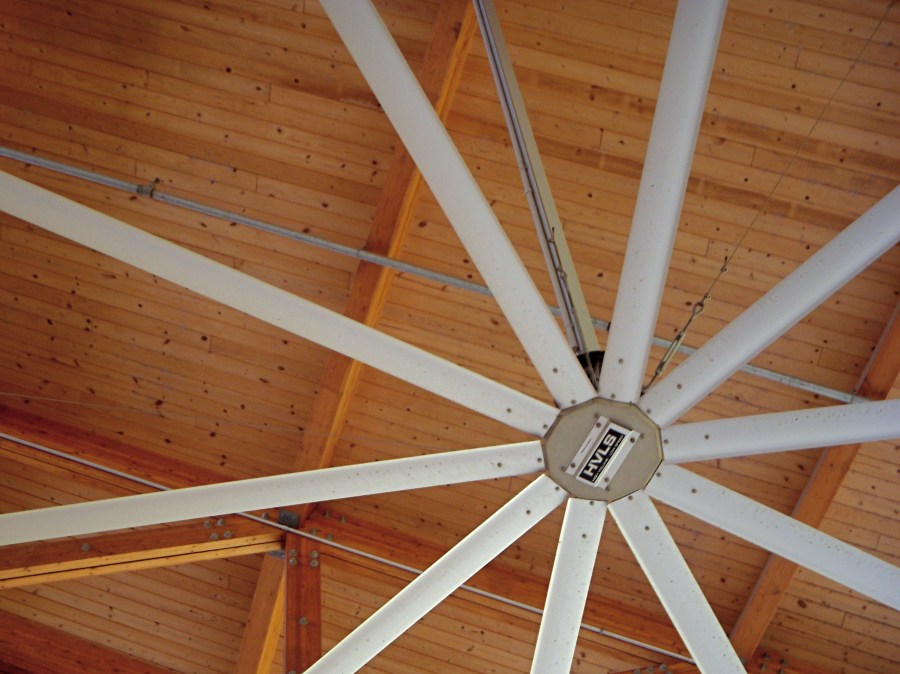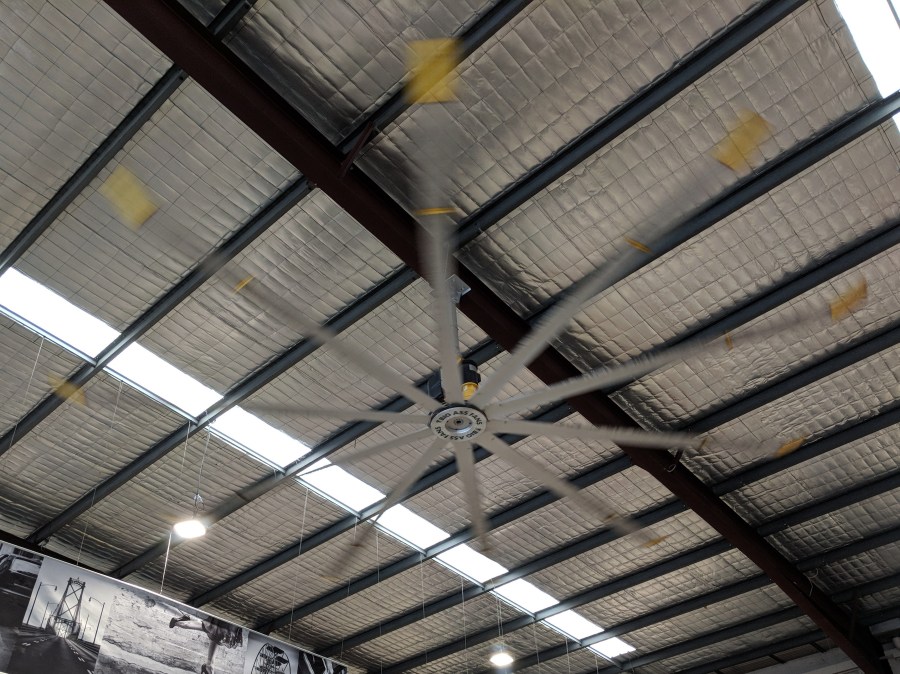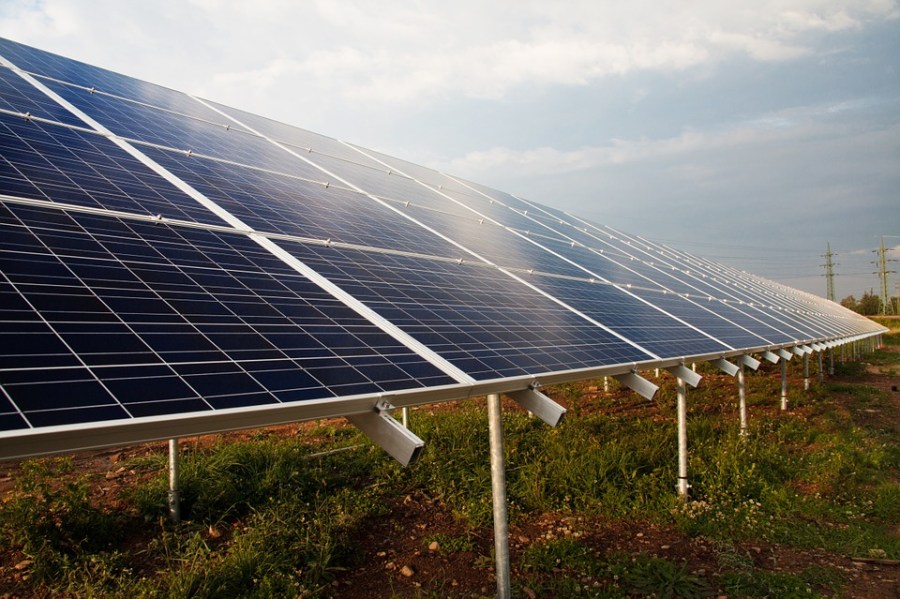
Fan Size
High-volume low-speed (HVLS) fans are an ideal type of fan to add to an blue-collar space. They're able to move large amounts of air, making them desirable for warehouses, retail spaces, restaurants and other massive, open areas. They also help your air conditioning system work more efficiently, saving money while keeping the air cool all year long.
HVLS fans fare in a wide set out of sizes, often up to 24 feet in diameter. It's important to determine the right sized before selecting any early options. Larger spaces require larger fans, and so a 24-foot devotee can be optimal in large warehouses and dispersion centers. However, fans with little diameters sour to circulate vent in targeted areas, such As to heat, assuredness or air a factory field where citizenry work. The smallest size up for an HVLS fan is about eight feet in diameter, but information technology can disseminate air in nearly 3,000 transparent feet of space.
Noise levels are profound to consider when selecting the right HVLS fan for your space. A fan running at a get down speed doesn't make as very much noise equally a fan operating at a higher speed. Smaller fans ingest to move quicker to make up as impelling at moving air, and the holler of a fan working harder and spinning the blades faster can spend a penny it hard to hear in the quad.

If you're installing the fan in an business blank space with a lot of machinery and equipment, then resound levels might not be a refer. However, if you're installing it in a place where you'atomic number 75 often interacting with clients or customers, be certainly to fit the decibel rating on the buff before making a purchase. HVLS fans typically accept a dB rating between 50 and 60 dBa, which is around the same steady of weak speech, reported to The Construction Specifier.
Fan Spacing
When determining the size and type of HVLS fan to buy for your industrial blank, consider how you use the space you said it you'll place the fans in telling to one another.
In high-traffic areas, place the fans close together along the itinerary that people travel. This delivers direct airflow to the people working infra so that the temperature feels cooler as they work. In doing so, the fans circulate and concentrate the aerial where you need it rather than trying to circulate vent passim the entire infinite.
If you have a large piece of music of equipment in the center of the industrial blank, consider placing cardinal fan directly over IT. This pushes the line cut down against the equipment, which causes the air to flow outward into the rest of the blank space and shoot heat. However, if you have several pieces of equipment running in a warehouse, you whitethorn be better off placing smaller fans between each HVLS lover. By analyzing your space, you buttocks choose the sized and number of fans necessary to move the air more efficiently.
DOE Consumption
HVLS fans don't use as much energy as smaller fans in the same space because they don't motive to work as hard to move air. However, if you have triplex fans in your industrial space or give birth to go forth them running constantly, the energy consumption adds up. Proper spatial arrangement and installation are key in maximising efficiency and minimizing energy losses. Equally a result, you may experience get down operating costs.

Solar-supercharged HVLS fans English hawthorn have higher rising-front costs, merely they operate the sun's energy rather than electrical energy. Solar panels installed on the roof of your edifice collect the energy from the sun and power the fans. They have battery backups to store energy during clear days to use at night OR on cloudy days when sunlight levels are low.
HVLS fans are ideal for current air in an industrial space. Opting for solar power gives you the added bonus of lowering overall costs and victimization green energy to benefit the environment, too.
How to Add More Fans to a Motherboard
Source: https://www.smarter.com/article/choosing-industrial-hvls-fan?utm_content=params%3Ao%3D740011%26ad%3DdirN%26qo%3DserpIndex

0 Komentar
Post a Comment